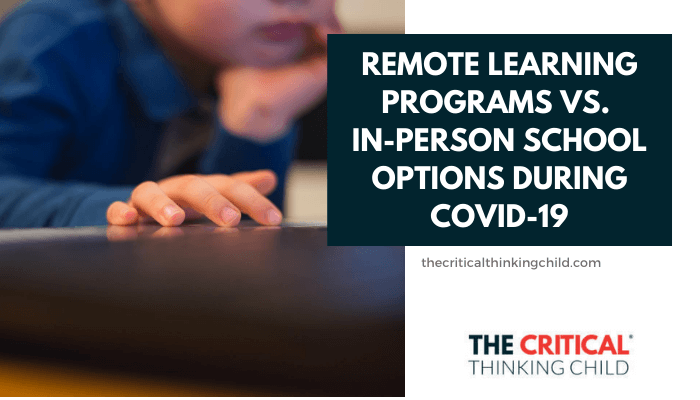With the pandemic still in full swing in parts of the U.S., parents are having to make the difficult decision whether to send their children to in-person or remote school this fall. Most school districts have developed their own back-to-school plans, and many are offering to let parents decide between in-person schooling or education from home.
While both options will be different from the typical back-to-school scenarios (and a third option–locally created “learning pods”–are beginning to pop up), they each have pros and cons. We’ll walk you through a few questions to consider when planning for your child’s return to school.
What is your childcare situation?
E-learning in the spring posed a number of logistical challenges for parents, one of the biggest being childcare. If you have an elementary aged child, think realistically about what remote learning will look like for them. Are parents working from home? Or, if caregivers are working outside of the home, who will oversee your child’s education?
If you plan to work from home and support your child in their remote learning, ask yourself: Are you able to take frequent breaks to monitor your child and help them with technology? Are you able to hire a nanny or coordinate with other parents to ensure that your child is successful?
If you cannot guarantee supervision for your child, you may consider sending your child back to school. However, if your child is in middle or high school and fairly independent, they may be able to manage their own remote learning.
What is your family’s risk level?
Think about the people that live in your household. If any of them are high risk or have pre-existing medical conditions, you may find remote learning to be the better option. While the research behind how likely children are to spread the virus is ambiguous, many parents with health considerations are opting to keep their children at home.
If your family is low-risk but you spend lots of time with elderly family members or have a grandparent helping you with childcare, weigh the risks of isolating yourself from elderly family members versus the benefits of in-person schooling.
What is the school’s plan for hybrid learning?
Schools and districts have been asked to prepare plans for both remote and hybrid learning options during COVID-19. Hybrid learning is a combination of education from home and in-person learning, and it will differ district to district. Some districts may opt to have elementary and middle school students attend school in person while high school students remain remote, using the high school facilities as overflow to help with social distancing. Other districts plan to send half of students to school on Mondays and Tuesdays and the other half on Thursdays and Fridays, while using the remaining three days for online tutoring in some form.
Once you familiarize yourself with your district’s plan, think about the logistics and what makes sense for your family. If it’s a two-day-a-week plan, is that appealing to you, or would you rather go remote and have the same routine every day? This is a personal decision, so think about what makes the most sense for your family’s schedule.
What is the school’s plan for remote learning?
In addition to a hybrid model, most schools have an official plan for e-learning. Education from home tends to be some combination of synchronous—that is live calls with the teacher—and asynchronous—pre-recorded lessons and discussion boards—plans for learning.
Before selecting the remote option, make sure you know the daily schedule for your student and that you feel comfortable with the number of hours your child will be learning independently.
How does your child feel?
While this decision ultimately lies with parents or guardians, you should consider your child’s emotional state. Some students are experiencing anxiety and would have trouble learning in-person, while other students are craving time with their friends and teachers and would do well wearing a mask and social distancing at school.
Get a sense of how your child feels and what’s most important to them. Use that information to inform your decision.
Choosing a school option during Covid-19
Unfortunately, there are no easy options right now, and families everywhere are having to make unprecedented decisions for your child. Remember, this is a deeply personal decision, so make sure you’ve gotten all the information you need to make the best decision for your child and your family. Education may look a little bit different this year, and that’s OK.



